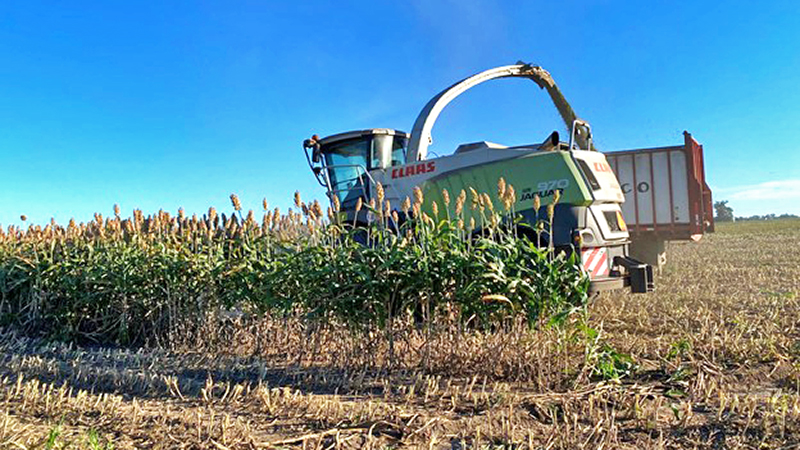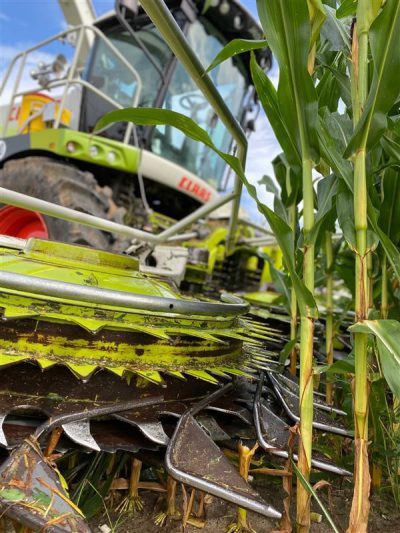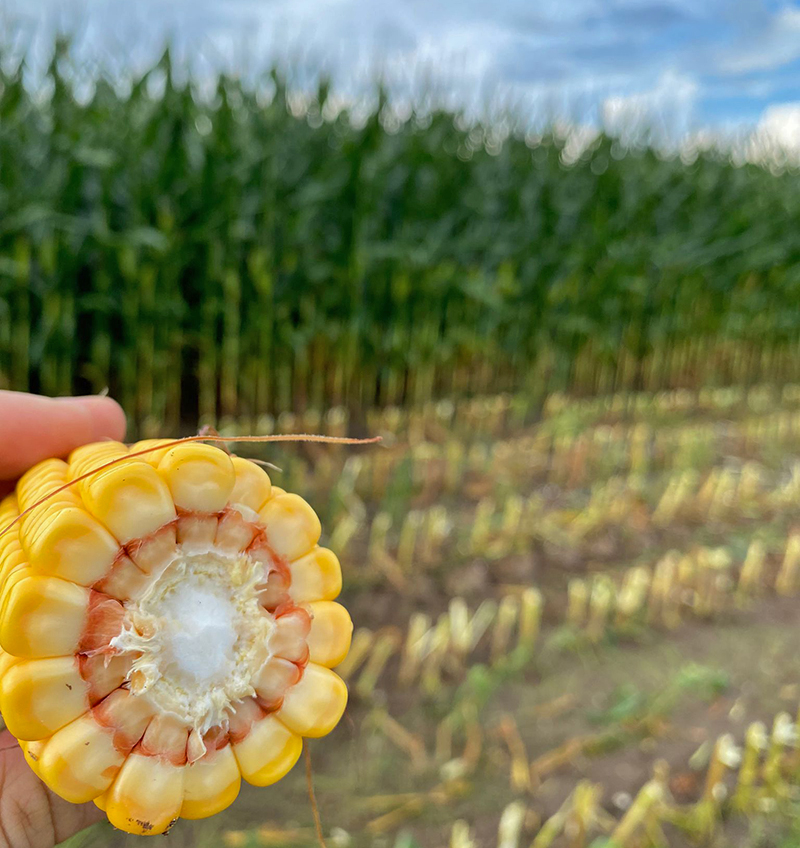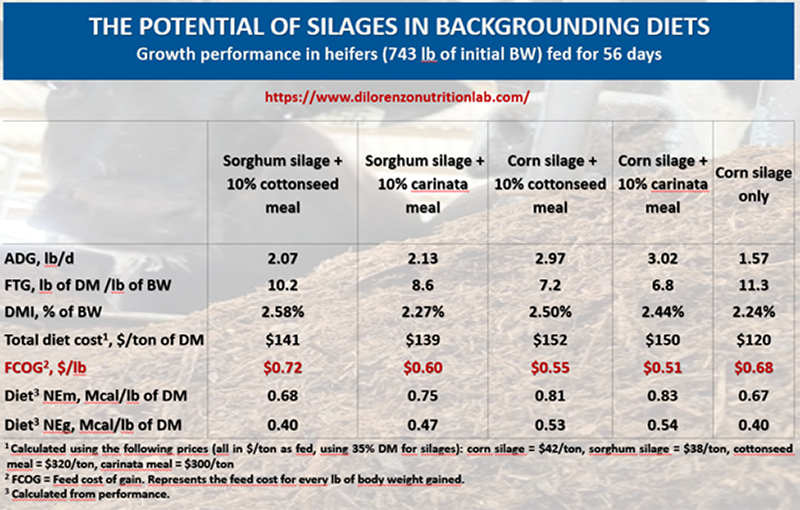
Figure 1. Sorghum silage harvested on October 26, 2021 at NFREC Marianna. Credit: Federico Tarnonsky, UF/IFAS

Figure 2. Corn silage harvest on July 1, 2021at NFREC Marianna . Photo credit: Federico Tarnonsky, UF/IFAS
Nicolas DiLorenzo, UF/IFAS Beef Specialist, North Florida Research and Education Center – Marianna
Every fall, the baling of the last cutting of hay brings an end to the perennial forage season. Fall is also the beginning of another important process; figuring out what to feed cattle until winter annuals are ready to be grazed. Where winter grazing is not an option, the hay being baled now will be fed in a few weeks, along with some supplement to avoid (or minimize) the loss of body condition in cows at the end of the gestation. In other operations, particularly in the Florida Panhandle, cows are already calving or about to start, placing extra pressure on the nutrition program for the lactating cow.

Figure 3 Corn maturity at silage harvest on July 2, 2021 at NFREC Marianna. Credit: Federico Tarnonsky, UF/IFAS
Researchers at the North Florida Research and Education Center (NFREC) have been experimenting with alternatives to bridge the fall forage gap, and also to add value while backgrounding calves when the opportunity is right, and markets allow. Corn and sorghum grown for whole-plant silage have been proposed as a summer crop rotation, and this year for the first time ever at NFREC, the double cropping system was tested in the Sod-based Crop Rotation System. Corn was planted in mid-March and harvested for silage the first week of July (Fig. 2 and 3 right) yielding 26 tons/acre of greenchop (34% DM). Sorghum was planted in July in the same field, only a week after corn was harvested, and was chopped for silage on October 26 yielding 11 tons/acre of greenchop (Fig.1 above).
The silage bag filled with corn harvested in July was recently opened and will help bridge the forage gap during the transition from summer pastures to winter annual grazing. In addition, replacement heifers and backgrounded calves will be fed both corn and sorghum silages as a cost-effective diet. Figure 4 shows the results of a recent feeding study at NFREC in which corn and sorghum silage diets were fed, including rates of gain and feed cost of gain on each of the diets. These results were highlighted at the 2021 NFREC Beef and Forage Field Day (pages 34-38), held in September 30 at NFREC in Marianna, FL.
–

Figure 4. Growth performance of backgrounding heifers fed corn or sorghum silage diets at NFREC in 2021.
–
Take Home Message
As emphasized previously in the article “Sorghum Silage – A Cost-effective Alternative for Backgrounding Weaned Cattle,” silage can be a very cost-effective feed resource for wintering cows and growing replacement heifers. At NFREC, a double cropping system of corn-sorghum tested this year yielded approximately 37 tons/acre of forage (more than 11 tons of DM/acre) in a single growing season. The expected gains from diets using corn and sorghum silages as the base forage, correcting for adequate protein, can be in the range of 1.5 to 3 lbs./hd/d. This range in weight gains creates much needed flexibility in feeding systems that may use feed resources strategically to develop heifers, background calves, or winter lactating cows, targeting optimal rates of gain for each category. As always, if you need help with diet formulations or nutritional management, contact your local county extension ag agent.
- 2025 Florida Bull Test Sale Sets Average Price Record - March 7, 2025
- 2025 Florida Bull Test Sale – January 18 - January 10, 2025
- Intake Limiters:Old Technology for Modern Beef Cattle Supplementation - September 20, 2024
